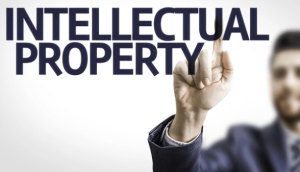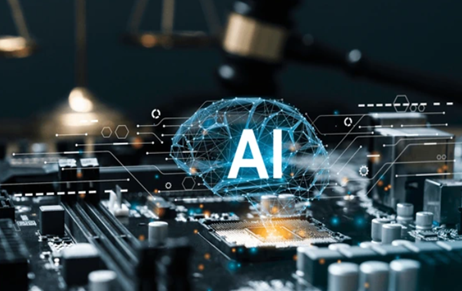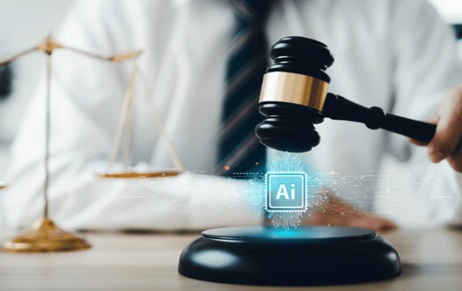Intellectual Property Rights (IPR) are like different keys for different locks. Just like every lock…
The Future of IP Licensing: Trends and Predictions for 2025
The intellectual property (IP) licensing has gone a long way with the pace of technology developments, changes in regulations, and globalization. The businesses have begun depending on the IP assets for earning revenues, which is why licensing could get more and more complicated and dynamic. Promises to be certainly transformed for IP licensing, 2025 would be the year from AI contracts to IP protected through blockchain.
The article is intended to look at the future of IP licensing, examining the key emerging trends, legal development, and technological innovations that are going to shape the sector. Key issues, which we shall explore, include digital rights management, the role of AI in augmenting regulatory challenges, and the increased relevance of open innovation.
Intelligent IP Licensing and Smart Contracts
AI and smart contracts are at that stage, and they have totally revolutionized the entire scheme of things regarding licensing for intellectual property. By compelling organizations to do their own tailor-made-internationally-automated contract drafting, negotiation, and compliance monitoring activities, these tools help analyze thousands of datasets for detecting potential infringement, suggest the best licensing terms, and help forecast future revenue in licensing from market trends.
Self-executing contracts, powered by blockchain technology, are also now binding enforcement tools for IP agreements. For example, it will make sure that reasonably the licensing terms are automatically fulfilled in a much way, eliminating the need for intermediaries and thus having very few legal disputes. Although it has not yet come to full fruition, with both AI and blockchain working together, it has a great potential that could turn licensing agreements from inefficient, nontransparent, and secure into an entirely different level.
According to a report on World Intellectual Property Organization (WIPO), this AI-enabled contract management would walk 30% of legal expenses away by 2025. The shift is likely to be more evident in music; film, which centers on pharmaceutical and software licensing; and, of course, general contracts.
Digital Rights Management and Blockchain
As discussed earlier, in future, IP licensing as a whole will benefit greatly from blockchain technology. It will be mainly focused on digital rights management (DRM). Inefficiency and piracy have been problems associated with old-fashioned DRM; blockchain, however, is a decentralized, nearly hard-waked solution. It is thus planned to allow rights possessors to register IP assets troughly, track use, and thus guarantee fair payment of everyone concerned from creator to copyright to businessman holding rights.
For example, one can take the work already being done in Vechain and Ethereum to generate immutable records of ownership and licensing agreements, allowing licensors to enforce rights across an organization without borders. Thus, the most relevant use of blockchain DRM is in industries such as gaming, streaming, and publishing, where the digitization of content is so heavy, and has such relevance in terms of sharing and monetizing it.
Adoption of blockchain in IP licensing will grow by more than 40% annually, according to a study by Harvard Business Review. Major names of the entertainment and software industries are at the forefront of increasing this growth. Blockchain, being transparent and efficient, will redefine how digital content is licensed and distributed.
The Global IP Regulations and Harmonization Efforts
As the value of IP assets increases in the digital economy, governments across the globe are stricter in regulating their intellectual property rights. Nevertheless, corporates face hurdles in their operations because of the dissimilarities between legal systems.
By 2025, we expect all the key international organizations, such as the World Trade Organization (WTO) and WIPO, to work more collaboratively in the creation of standardized global licensing frameworks. The European Union, for instance, is developing new legislation to facilitate cross-border licensing especially in the creative and highly technological industries.
Despite having trade disputes, the United States and China are working hard to harmonize their IP laws for smooth licensing arrangements between the two countries. The China National Intellectual Property Administration (CNIPA) has made new reforms to strengthen patent protection and will encourage many foreign companies to license their IP in the region (CNIPA, 2024).
This effort that goes global will simplify the licensing of an entity’s IP assets across several countries at the same time reduces legal uncertainties and helps boost innovations.
Open Innovation and Collaborative Licensing are the New Norms
An open innovation and collaborative licensing model is yet another major change in the world of IP. Traditionally, companies were very guarded over their IPs. Now, the trend is sharing IP to innovate and expand into new markets.
Sectors like biotechnology, pharmaceuticals, and even the newly emerging areas of artificial intelligence have begun to adopt collaborative licensing models, where companies license their patents to one another within patent pools. This mechanism is gaining traction, especially in areas where innovation is nurtured through common research and development, wherein multiple companies offer their patent assets collectively.
One example is the Open COVID Pledge, where companies granted free access to their patents for the purpose of accelerating the vaccine and medical research development efforts during the global pandemic. This highlighted the ability of open licenses to address global issues.
Further on, it is expected that many more companies will embrace collaborative licensing as a growth strategy to lower legal barriers and promote progress among industries.
IP Licensing in the Metaverse and Virtual Reality
With metaverse and virtual reality expanding by leaps and bounds, IP licensing has entered yet another dimension. All types of digital property: virtual land, avatars, and digital artwork, need intensive licensing frameworks that would safeguard ownership rights and provide fair compensation for their creators.
Platforms like Decentraland and The Sandbox are currently installing blockchain-based licensing deal structures and use of their virtual assets. This move is more favorable for fashion brands, musicians, and artists who would now look for new outlets in the metaverse for more sales.
Challenges in the Future of IP Licensing
The future of IP licensing is full of promise, but many challenges must be addressed. One important aspect is jurisdictional enforcement of licensing agreements. Notwithstanding recent technological strides, disputes over IP rights are a major issue, especially in developing regions having weak enforcement mechanisms.
Another impediment is the moral side of AI of licensing. With greater participation by AI in decisions, the bias, transparency, and accountabilities of such systems will come into question. Such companies must ensure their AI licensing tools are fair and do not undermine smaller players within the industry.

Moreover, as more industries drive toward collaborative licensing, there could also be competition law and antitrust concerns. Governments have to balance the requisite incentives for innovation against fair business competition to avoid any possible monopolistic stance.
By 2025, the future of IP licensing will be influenced by AI, blockchain technology, and emerging global regulation. Such developments will render licensing activities efficient, transparent, and secure in order for companies to derive maximum value from their IP assets.
Still, challenges stand, but ongoing harmonization of international law and an increasing use of collaborative licensing models will encourage an eternal sunny outlook for the industry. Those companies that catch these trends sooner will have a double economic gain: more effective protection of their IP assets and enhanced value-add opportunities in the digital economy.
By riding ahead along this curve, businesses and creators will be in a better position to leverage IP licensing as an innovation and profits tool.
References
- WIPO. (2023). The Role of AI in Future IP Licensing. Retrieved from www.wipo.int
- Harvard Business Review. (2024). How Blockchain is Changing the IP Landscape. Retrieved from www.hbr.org
- CNIPA. (2024). China’s New IP Licensing Framework: Opportunities and Challenges. Retrieved from www.cnipa.gov.cn
- WTO. (2023). Global IP Regulations and Their Impact on Licensing. Retrieved from www.wto.org



